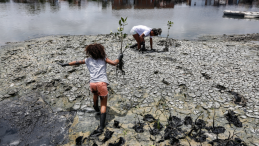UNU-IAS has launched a video series featuring the traditional gardens of Kanazawa city, Japan to highlight the role of urban nature in preserving biodiversity and promoting sustainable development.
“These gardens are a significant part of urban nature,” said Juan Pastor Ivars (Research Associate, UNU-IAS), providing a space for residents to connect with the natural environment as well as an ecosystem for local species. The first video titled "Kanazawa, a City Blessed by Water" focuses on water as a key feature of urban gardens. It shows how the water flowing through Kanazawa’s canals and gardens sustains plants and animals, and contributes to the well-being of residents.
The second video, “Gardens and the Lives of Artisans”, explores the links between people, culture, biodiversity, and urban landscape in Kanazawa. Highlighting the symbiotic relationship between local artisans and traditional Japanese gardens, the video shows how humans and nature can co-exist to create a sustainable urban ecosystem rich in biocultural diversity.
“Gardens Bringing People Together”, the third video in the series, spotlights urban gardens as inclusive spaces for social and environmental impact. Through volunteer cleanup activities in Kanazawa's historical gardens, people have enhanced their well-being, built community ties, and deepened appreciation for local biodiversity.
The video series is part of the Sustainable Urban Nature project implemented by the UNU-IAS Operating Unit Ishikawa/Kanazawa (OUIK) to raise awareness of the multiple benefits of urban gardens, such as biodiversity conservation, preservation of cultural values, and climate change mitigation. “Hopefully more people will appreciate the importance of urban nature of Kanazawa city and join our activities,” said Dr Ivars.
The series is available on the UNU-IAS YouTube channel.


